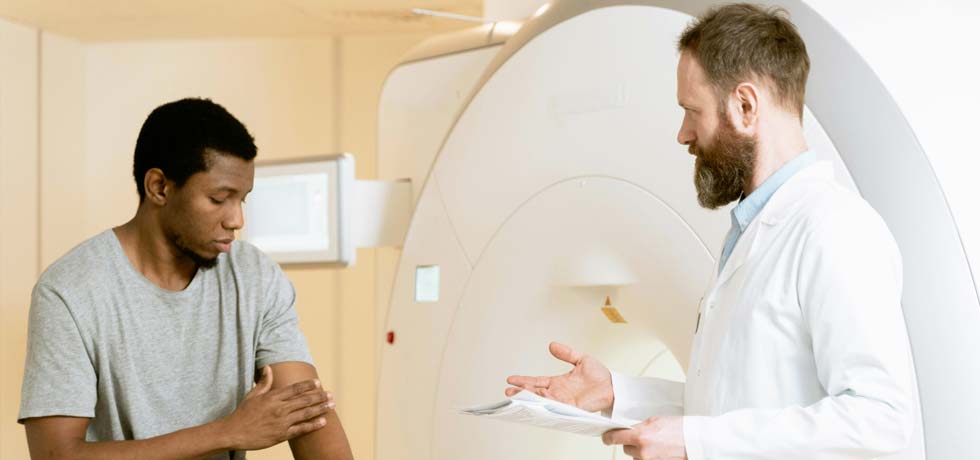Benign prostatic hyperplasia (BPH) remains one of the most prevalent urologic conditions affecting aging men. By age 60, over half of men will experience symptoms associated with prostate enlargement, with urinary frequency, nocturia, weak stream, and incomplete bladder emptying being the most common. Traditionally, pharmacologic therapy and surgical interventions such as transurethral resection of the prostate (TURP) have served as the clinical mainstays of management. However, the emergence of Prostate Artery Embolization (PAE) as a minimally invasive alternative is redefining the therapeutic algorithm for BPH.
This article aims to clarify common misconceptions about BPH treatment, compare PAE with traditional surgical approaches, outline patient candidacy criteria, and explore the value of PAE as performed at VIR Chicago.
Common Misconceptions in BPH Management
- Does effective treatment always require removing or destroying tissue?
No. PAE works by blocking blood flow to the prostate, causing it to shrink naturally. This reduces lower urinary tract symptoms (LUTS) without the need for cutting, resection, or interfering with the urethra or bladder neck.
- Are Minimally Invasive interventions less effective?
Recent randomized controlled trials and long-term observational studies show that PAE provides comparable symptom relief to TURP, particularly in patients with moderate to severe BPH, with the added benefit of lower risk of complications.
- Invasive Surgery is required to address significant prostate enlargement? PAE has been shown to be effective even in patients with prostates larger than 80cc, expanding the pool of candidates who may not tolerate or wish to avoid invasive surgery.
PAE vs. Traditional Surgical Interventions: A Comparative View
When evaluating treatment options, it’s essential to weigh clinical efficacy against patient-specific risks, quality of life, and recovery expectations.
- Invasiveness and Recovery
PAE is carried out by inserting a catheter through the femoral or radial artery, using local anesthesia and without any surgical cuts. Most patients are discharged the same day, with minimal post-procedural discomfort. In contrast, TURP and other ablative procedures require general or spinal anesthesia, operative instrumentation, and often a hospital stay with catheterization.
- Functional Outcomes
TURP is associated with a significant risk of sexual dysfunction, including retrograde ejaculation (in up to 65% of cases) and erectile dysfunction. PAE, by sparing the urethra and nerve structures, demonstrates a more favorable profile regarding preservation of sexual and ejaculatory function.
- Cost Considerations
While insurance coverage varies, PAE is generally associated with lower total healthcare costs due to reduced OR time, shorter recovery, and fewer complications requiring follow-up interventions.
- Durability
Long-term studies now suggest that PAE maintains efficacy in symptom reduction and improved International Prostate Symptom Scores (IPSS) for up to 5 years, with the potential for repeat embolization in select cases without compromising safety.
Identifying the Ideal PAE Candidate
PAE is not universally appropriate for all BPH cases, and patient selection remains critical to outcomes.
Ideal candidates include:
- Men with moderate to severe LUTS secondary to BPH who are either poor surgical candidates or prefer to avoid surgery.
- Patients who do not respond well to medications or experience adverse effects from them.
- Men concerned about preserving sexual function and ejaculatory integrity.
- Individuals with significantly enlarged prostates (>80cc) who may not be ideal candidates for TURP or HoLEP.
Contraindications:
- Advanced atherosclerotic disease complicating arterial access
- Active prostatitis or urinary tract infection
- Known prostate malignancy (should be ruled out prior to PAE)
Comprehensive pre-procedural assessment, including MRI or CT angiography, prostate volume measurement, and symptom scoring, is essential in determining suitability.
VIR Chicago’s Approach to PAE
At VIR Chicago, PAE is performed by interventional radiologists with extensive expertise in pelvic arterial anatomy and embolization techniques. The use of high-resolution fluoroscopy and cone-beam CT ensures precise particle delivery and targeted embolization while minimizing nontarget ischemia. We take a collaborative approach that brings together specialists in urology, interventional radiology, and primary care to ensure the best possible results. Post-procedural follow-up includes serial symptom tracking and imaging to ensure sustained benefit and address any residual or recurrent symptoms.
Conclusion
While surgery continues to play a vital role in BPH treatment, Prostate Artery Embolization represents a paradigm shift—a safe, effective, and patient-centric alternative that should be considered early in the treatment algorithm for appropriate candidates. With growing evidence and evolving technique, PAE is not simply a backup option but a first-line therapy for many men. VIR Chicago stands at the forefront of this shift, offering a robust clinical program for men seeking relief from BPH without the downsides of surgery.




